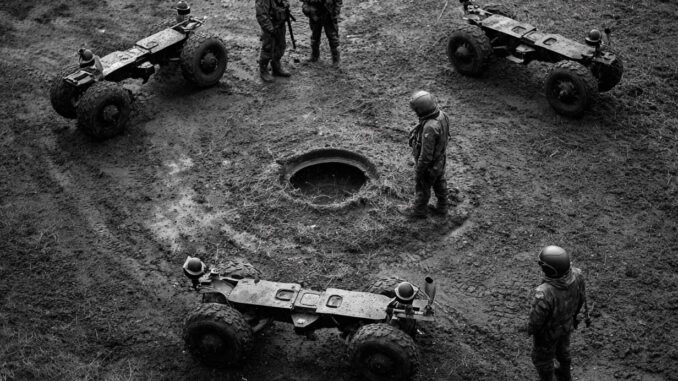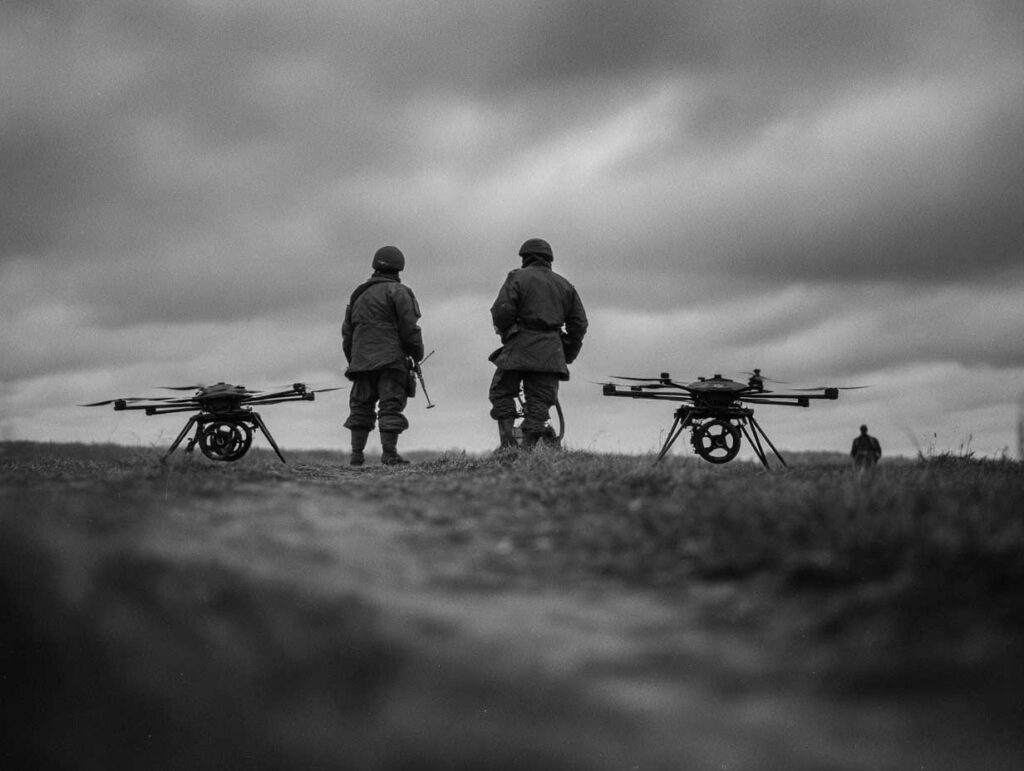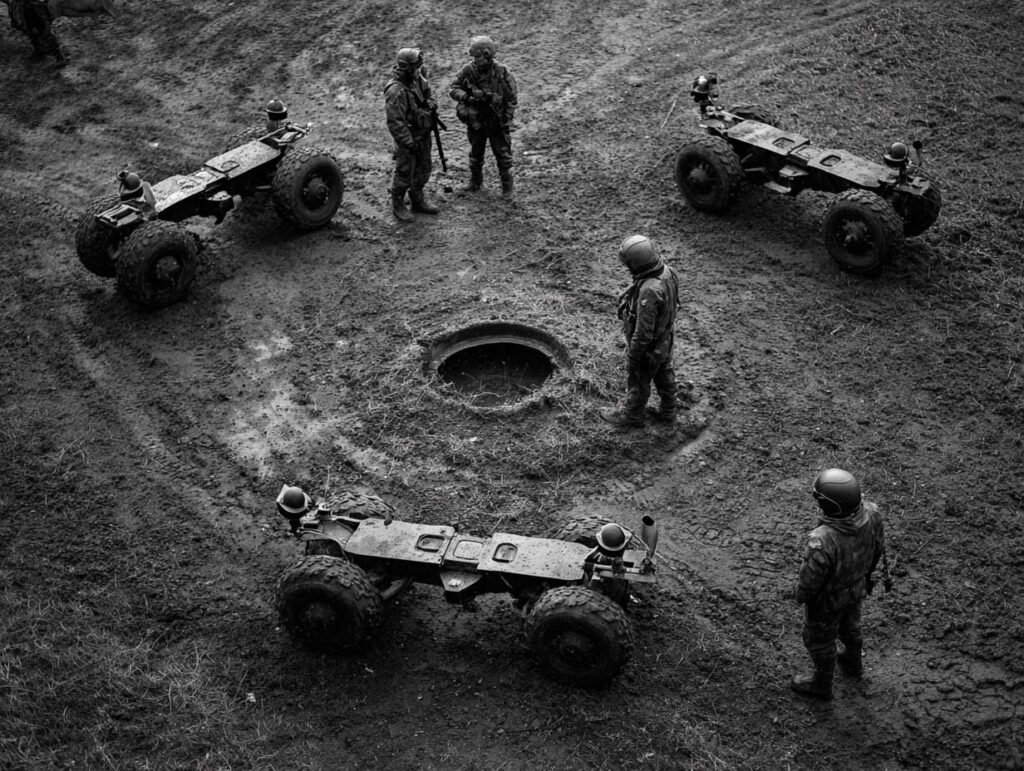
Ukrainian robots and drones have secured the surrender of Russian soldiers. Technical analysis of a new stage in the automated war.
In the Kharkiv region, Ukrainian ground robots accompanied by drones forced Russian soldiers to surrender without the physical presence of Ukrainian troops. This operation marks a major strategic advance. Ukraine now deploys a wide range of drones and autonomous ground vehicles capable of attacking, transporting the wounded, delivering equipment, and detecting mines. In 2025, the Ukrainian army established a branch specializing in unmanned systems, with massive domestic production and innovation accelerated by operational needs. This model of warfare, based on robotization, is redefining military balances, limiting human losses, and exposing the weaknesses of traditional armies in the face of agile and technologically adaptable adversaries.

Surrender without soldiers: an unprecedented event in modern warfare
In early July 2025, a Ukrainian robotized unit carried out an unprecedented operation in northeastern Ukraine. With no human presence on the ground, Russian soldiers were forced to lay down their arms. The action took place in the Kharkiv Oblast, a sensitive area that had been the scene of ongoing clashes for several months. After a targeted strike by a kamikaze drone on a Russian entrenched position, a ground robot equipped with a loudspeaker approached and broadcast an order to surrender. The Russian soldiers, disoriented and virtually surrounded by observation drones, obeyed. The robot then guided them out of the combat zone.
This type of operation marks a shift in the way contact warfare is conducted. These are no longer simple remote-controlled strikes, but a complete operation—attack, secure, capture, extract—carried out exclusively by machines, in a short cycle, with no human casualties on the Ukrainian side. This situation, which had never been seen in modern warfare, illustrates the rise of unmanned warfare.
A military organization dedicated to unmanned systems
Ukraine structured its technological effort by creating an independent military branch in 2024: the Unmanned Systems Forces. This structure, separate from the air force and army, is responsible for coordinating the development, testing, production, and deployment of aerial, maritime, and ground drones.
In 2025, this force had more than 5,000 personnel and an arsenal of several thousand armed FPV drones, autonomous ground vehicles, and observation platforms. It claims that in June 2025 alone, it hit more than 19,000 targets, including nearly 90 tanks, 120 armored vehicles, more than 400 artillery pieces, and 2,500 Russian personnel.
The Ukrainian military’s stated goal is to produce 5 million drones by the end of 2025, the vast majority of which will be manufactured by domestic companies. In 2024, approximately 96% of the drones used in operations were already produced domestically by a network of startups, volunteer workshops, and industrial subcontractors.
Ground robots: evacuation, support and combat
Alongside the rise of aerial drones, Ukraine is deploying several models of autonomous ground vehicles. These robots perform a wide variety of tasks, including transporting ammunition, evacuating the wounded, detecting and neutralizing mines, and providing light fire support.
Among the models in service, the Rys Pro can carry up to 300 kg of cargo, while the Ironclad robot is capable of traveling at 12 km/h over difficult terrain with 350 kg of equipment. Other models, such as Camel and Krampus, are specially designed for close combat. Krampus, for example, is equipped with flamethrowers and thermobaric grenade launchers and can be used in urban or forest areas. It has an autonomy of several hours and is controlled via robust, jam-resistant links.
The Ukrainian Ministry of Defense plans to deploy 15,000 ground combat units by the end of 2025, with a particular focus on armed platforms capable of hitting moving targets at night and during the day.
Tactics revolutionized by FPV drones
FPV (First Person View) drones, built on the basis of modified civilian quadcopters, have become a standard weapon in the war in Ukraine. They cost between €300 and €1,000 depending on the model, and typically carry between 250 and 400 grams of explosives.
Remotely controlled by operators via immersive vision goggles, these drones are used en masse. They strike trenches, tanks, vehicles, and groups of soldiers. Their advantage is twofold: they are inexpensive and highly accurate.
In frontline areas, the Ukrainians maintain a constant network of observation drones. These devices, which can usually be recovered, provide in-depth surveillance of 2 to 4 kilometers into enemy territory.
Armed drones are often used in conjunction with traditional artillery or guided missiles. When the payload carried by an FPV drone is not enough to neutralize a target, the operator coordinates a secondary strike. This integration has significantly increased the lethality of small units without increasing manpower.
Electronic countermeasures and new innovations
The widespread use of these drones has prompted a Russian response focused on jamming frequencies and guidance systems. Some sectors of the front are equipped with electronic warfare devices designed to neutralize control signals.
To counter this jamming, Ukraine has developed several countermeasures:
– drones equipped with multi-frequency protocols,
– software for automatic return to the point of departure,
– drones capable of detecting jamming signals and targeting them directly,
– and more recently, drones guided by fiber optic cables, which are immune to jamming.
The technological race is constant: every innovation calls for a countermeasure. The effectiveness of a system is temporary, until the adversary finds a response. This dynamic leads to a cycle of rapid adaptation that is impossible to maintain for a centralized or slow-to-reform army.

Strategic impact and consequences for the armed forces
The widespread use of drones and robots has transformed the battlefield in Ukraine. Russian motorized transport has become almost unusable within a radius of 20 to 30 kilometers from the front lines. Russia has had to resort to archaic means such as motorcycles, horses, and manual carrying to ensure logistics.
According to Ukrainian intelligence, Russian losses are largely due to drone strikes, which are believed to account for between 60 and 70% of the damage inflicted on enemy units. This operational model allows the Ukrainians to limit their human losses while maintaining constant pressure on the enemy.
This approach calls for a profound rethinking of Western military doctrine. Traditional armies, with their focus on heavy equipment and rigid hierarchical structures, are struggling to keep pace. In comparison, Ukraine has adopted a decentralized, flexible system based on rapid production cycles, real-world testing, and a high degree of autonomy for units in the field.
Towards a war without soldiers?
The Kharkiv operation demonstrates that it is now possible to achieve significant military results without sending a single soldier into contact with the enemy. This paradigm shift raises ethical and operational questions, but also industrial ones.
War is becoming a technological production sector in its own right. The next steps are already in the pipeline: swarm drones, embedded AI systems, laser weapons, and semi-autonomous platforms. Ukraine, in the midst of conflict, has become an open-air military laboratory.
Faced with this development, the major military powers must review their strategy. The battlefield of the future will be dominated by the ability to innovate, produce quickly, adapt constantly, and integrate civilian technologies into an operational context.
War Wings Daily is an independant magazine.